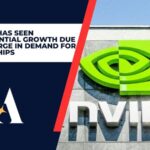United Launch Alliance’s Vulcan rocket finally made its first flight Monday morning after more than a decade in development.
As it marks an important step for SpaceX’s ambitious plans of replacing Atlas V and Delta IV rockets with this vehicle, today was an historic day for them.
Astrobotic’s Vulcan rocket successfully lifted off at 2:18 a.m. ET carrying its Peregrine lunar lander.
What Is Vulcan?
ULA has spent over a decade developing Vulcan as their alternative rocket to Atlas and Delta rockets, though its launch was delayed by issues with Blue Origin’s BE-4 engines used in its first stage.
Cert-1 marks the first of two certification flights that Vulcan must undertake before receiving approval by the Space Force to carry national security payloads. The vehicle will use two BE-4 methane-fueled boosters, two GEM 63XL solid rocket boosters, and dual RL-10C upper stages with standard-sized payload fairings – an array of BE-4 methane-fueled boosters, GEM 63XL solid rocket boosters, and dual RL-10C upper stages – before ascending.
Astrobotic’s Peregrine lunar lander and five NASA experiments will be launched into an orbit that allows them to perform various maneuvers before landing on the Moon. Vulcan will also demonstrate its capability of transitioning from low Earth orbit into highly elliptical geostationary orbit – this feature being particularly valuable because customers can take advantage of Vulcan’s lower cost point when deploying satellites at these altitudes.
What Is the Vulcan Centaur?
ULA representatives highlighted their company’s expertise in space launch operations through the Vulcan Centaur rocket, according to Gary Wentz, Vice President for Government and Commercial Programs of ULA. According to Wentz, over 120 years of Atlas and Delta experience were put into launching this rocket successfully.
ULA announced the Vulcan program in 2015 with an initial target launch date set for 2019, yet delays in developing BE-4 engines from Blue Origin space company caused by Jeff Bezos have led to further complications for launch.
Once the Vulcan rocket is certified for flight, it will take on both national security and commercial contracts. Cert-1 marks its inaugural mission – this time to deploy Astrobotic’s Peregrine lunar lander with scientific instruments and tech demo payloads for NASA and other customers. Once separate from Centaur, an upper stage’s RL10C-1-1A engines will ignite for 10 minutes to send the spacecraft into orbit without fear that its booster, SRBs, or Centaur may survive reentry back into Earth’s atmosphere for recovery by recovering both boosters/SRBs/Centaur.

What Is the Vulcan Centaur V?
Vulcan rocket is finally ready to fly after 10 years of development by SpaceX and United Launch Alliance, serving as a more economical, all-American solution for transporting some of the nation’s most valuable satellites.
On Jan. 7, United Launch Alliance started loading Vulcan with liquid natural gas and liquid hydrogen propellant to ensure full fueling for its test flight. ULA says the Centaur upper stage will carry Astrobotic Technology’s Peregrine lunar lander as well as two Amazon Kuiper broadband network satellites into orbit for its inaugural test launch, along with ULA’s SMART reusability system that allows its engines to detach post-separation and be caught midair for reuse on future flights.
Boeing and Lockheed Martin–who own ULA in a 50-50 partnership–face headwinds as SpaceX makes inroads into government contracts through its Falcon 9 rocket, prompting regular Vulcan launches from Boeing/Lockheed Martin/ULA in order to retain their business with both Defense Department and NASA.
What Is the Vulcan Centaur’s Payload?
Cert-1 will mark the inaugural mission for Vulcan Centaur. On board will be Astrobotic’s Peregrine lunar lander from Pittsburgh-based Astrobotic, as well as Iris, designed by Carnegie Mellon students. Peregrine will perform both linear and point-turn movements while collecting images and data about its surroundings on the moon’s surface.
Jeff Bezos’ aerospace company Blue Origin developed and built two BE-4 engines, while up to six solid rocket boosters (SRBs) can be added depending on a mission’s needs.
Cape Canaveral’s Space Force Station is currently in final preparations to launch their rocket, according to ULA officials. ULA expects spectators to witness it rise off its pad at night and fueling will take place early Monday morning. The rocket stands 202-feet tall when fully fuelled for launch.
- Friday Intraday Trading Sees Nvidia’s stock Market Cap Momentarily Cross $2 Trillion
- Trump’s January 6 Civil Cases Proceed While Criminal Case Is Halted
- Trump Delivers Speech at the Columbia Black Conservative Federation Gala
- Trump Declares Strong Support for IVF Following Alabama Supreme Court Decision
- Schumer in Ukraine Declares US Backing During House Aid Standoff






